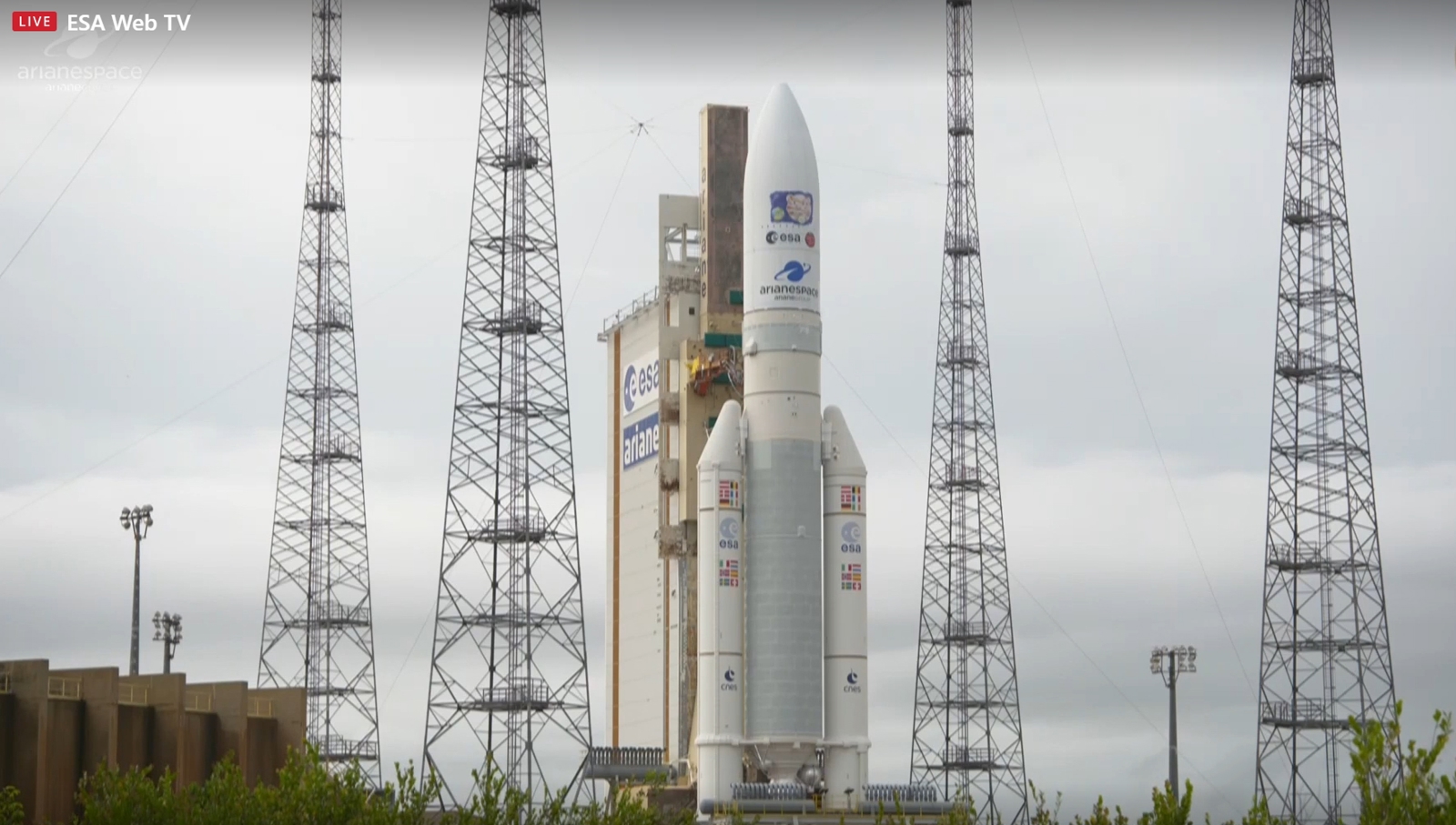
Norwegian technology on a journey through space to look for life forms on Jupiter's moons
April 14th, 2023, at 14:15 CET, the European Space Agency (ESA) launched Ariane 5 for a special mission searching for conditions that could support lifeforms on Jupiter’s icy moons. Kongsberg Defence & Aerospace (KONGSBERG) is proud to be a part of this mission with our technology onboard.
-
Text:Helene Bergset
Photo:The European Space Agency (ESA), Helene Bergset
From Kourou in French Guiana, located on the northeastern coast of South America, the satellite JUICE was launched into space.
JUICE ("JUPiter ICy moon Explorer") is one of humanity's next great voyages of discovery in space. The JUICE satellite will after launch embark on an 8-year long journey to Jupiter, having several gravity assists from Venus, Mars and Earth. The mission consists of flybys to Jupiter’s three ocean-bearing moons Europa, Callisto and Ganymede.

Exploring Jupiter and Ganymede illustration. Photo credit: ESA
“It is a spectacular mission. The vast majority of satellites have their eyes turned inwards towards the Earth. This one has an outward view,” says Director Program Space Products at KONGSBERG, Sedsel Fretheim Thomassen.
Technology from Kongsberg Defence & Aerospace
The satellites manufacturing was contracted to Airbus in Toulouse, France, and in 2016 they contracted the Solar Array Drive Assembly (SADA) to KONGSBERG – hardware crucial for the satellite’s access to energy. The satellite gets energy by using 85 square meters of solar panels that must rotate at exactly the right time and without problems. These solar panels will power the satellite - even though it is hundreds of millions of kilometers from the sun.
“Half of the job is the development; the other half is to test whether it will survive the extreme conditions it will be in. We have tested that over a long time, so we are quite calm,” emphasizes Thomassen.
In addition to the SADA, KONGSBERG has also delivered Attachment & Release Mechanisms and Level Conditioners to the Ariane 5 launcher. The attachment mechanisms attach the booster motors to the launcher body and transfer the power from the booster so that the launcher is lifted, and the level mechanism measures the fuel level in the tanks.
Watching live from Kongsberg
In the city of Kongsberg, several of the technologists and engineers who have been working on the project followed the launch live.

Several of the technologists and engineers watching the launch live from the city of Kongsberg. Project Owner, Carsten Haavardtun, introducing the project before take off.
Carsten Haavardtun, Product Owner, has been working on the JUICE project for the last five years.
“It was quite emotional to watch the launch. Even though everything has been checked multiple times and I have every confidence in our team, there is always that small fear of something not working. At the same time there is great pride in what we have achieved and in all the hard work the team has done,” says Haavardtun.
He explains that the space business can be very demanding, and that at times the team has worked day and night to deliver a product they now are very proud of.
“This project means a great deal to us. It is one of the pilar projects in the industry and it has received a lot of attention both in the space business and in the media. Personally, I am most excited about the extreme nature of the entire project. Everything is extreme, the operating temperatures from +150 degrees to -250 degrees, harsh radiation, powerful mechanical forces etc. This project really challenges us in every aspect,” continues Haavardtun.
An 8-year long journey searching for lifeform on Jupiter’s icy moons
28 minutes after launch, the JUICE satellite ejected itself from the Ariane 5.

“We have been informed that the solar panels have been unfolded. They have started transmitting power to the satellite through our equipment. Everything is as it should be and works,” says Manager Business Development, Sylvia Merethe Omholt.
During the first 17th days, the satellite’s solar panels and antennas will be deployed, before it continues its journey towards Jupiter.
The satellite will spend three and a half years gathering information about Jupiter and its icy moons. Scientists think there is reason to believe that there is life on Jupiter, which allegedly has more ocean than Earth, even though the planet temperature is measured at minus 250 degrees.
Thomassen says the mission is necessary to understand our own existence.
“How does the world work? Do we have the right understanding of planets and pure physics? Where do we come from? It's a cool mission to be involved in,” admits Thomassen.

Sedsel Fretheim Thomassen live from TV2 studios.